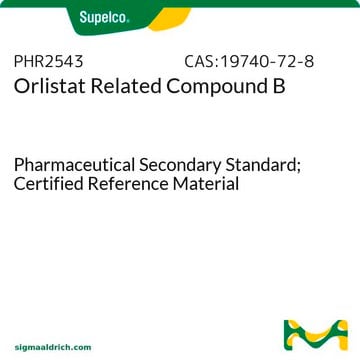T84603
Triphenylphosphine oxide
98%
Synonyme(s) :
Ph3PO, TPPO, Triphenyl phosphorus oxide, Triphenylphosphine monoxide
About This Item
Produits recommandés
Pureté
98%
Pertinence de la réaction
reagent type: ligand
reaction type: Coupling Reactions
reagent type: ligand
reaction type: Epoxidations
reagent type: ligand
reaction type: Michael Reaction
Pf
150-157 °C (lit.)
Groupe fonctionnel
phosphine oxide
Chaîne SMILES
O=P(c1ccccc1)(c2ccccc2)c3ccccc3
InChI
1S/C18H15OP/c19-20(16-10-4-1-5-11-16,17-12-6-2-7-13-17)18-14-8-3-9-15-18/h1-15H
Clé InChI
FIQMHBFVRAXMOP-UHFFFAOYSA-N
Vous recherchez des produits similaires ? Visite Guide de comparaison des produits
Application
- As a catalyst in Appel-type chlorination reaction of acyclic primary and secondary alcohols.
- As a catalyst in stereoselective poly and dibromination of α,β-unsaturated esters and β,γ-unsaturated α-ketoester compounds.
- As a promotor in the diastereoselective synthesis of α-ribofuranosides through ribofuranosylation of alcohols with ribofuranosyl iodides.
Mention d'avertissement
Warning
Mentions de danger
Conseils de prudence
Classification des risques
Acute Tox. 4 Oral - Aquatic Chronic 3
Code de la classe de stockage
11 - Combustible Solids
Classe de danger pour l'eau (WGK)
WGK 2
Point d'éclair (°F)
356.0 °F
Point d'éclair (°C)
180 °C
Équipement de protection individuelle
dust mask type N95 (US), Eyeshields, Gloves
Certificats d'analyse (COA)
Recherchez un Certificats d'analyse (COA) en saisissant le numéro de lot du produit. Les numéros de lot figurent sur l'étiquette du produit après les mots "Lot" ou "Batch".
Déjà en possession de ce produit ?
Retrouvez la documentation relative aux produits que vous avez récemment achetés dans la Bibliothèque de documents.
Les clients ont également consulté
Notre équipe de scientifiques dispose d'une expérience dans tous les secteurs de la recherche, notamment en sciences de la vie, science des matériaux, synthèse chimique, chromatographie, analyse et dans de nombreux autres domaines..
Contacter notre Service technique










